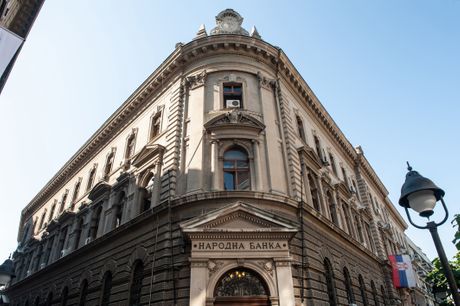Serbian central bank: Key policy rate, deposits and lending facility rates kept unchanged

The National Bank of Serbia (NBS) Executive Board decided to keep the key policy rate on hold, at 5.75% and did not change the deposit (4.5%) and lending facility (7.0%) rates either.
According to a statement, in making the decision, the Board noted that central banks worldwide, including the NBS, continue to face marked uncertainty regarding protectionist measures of leading world economies and their impact on inflation and economic growth.
It is added that estimates prevail that, in such circumstances, the pace of decline in global inflation remains uncertain, while economic growth will most probably be subdued due to disruptions in trade flows and production chains, as well as the globally heightened risk aversion which will negatively affect investment and consumption.
In addition, inflation at home also depends on the still highly volatile movements in international commodity and financial markets.
"Though global prices of primary commodities, especially oil, have receded due to expectations of slower global growth, caution is needed as increased production costs amid higher tariffs could produce inflationary effects," the central bank said.
The Board also took into account the ECB’s continued accommodative stance in June, which should reflect on more favorable euro-indexed lending in Serbia, while the current announcements suggest that the Fed will be more cautious in monetary policy easing going forward.
Such decisions by the Fed could be prompted by the emergence of heightened inflationary pressures due to additional tariffs imposed, which could also affect capital flows toward emerging economies, according to the NBS.
"The prices of some food inputs in the global exchanges (cocoa and coffee) that recently reached their maximum levels, as well as the effects of last year's drought, affected domestic food prices over the past months, but the situation will likely stabilize with the onset of the new agricultural season," the statement noted.
Consistent with the NBS's expectations, year-on-year inflation continued to move within the target band, having slowed to 3.8% in May while inflation slowdown since the beginning of the year resulted from lower contributions of energy and services prices, while the contribution of food prices increased.
The easing of inflationary pressures is also signaled by core inflation, having decelerated to 4.6% year-on-year in May, and by other inflation measures. Inflation will likely remain at a similar level by mid-year, slow down thereafter and approach the target midpoint of 3% by year end, hovering around that level until the end of the projection horizon, the central bank announced.
"Such inflation trends will be mostly determined by the still tight monetary conditions, lower import inflation, reduced global energy prices and the new agricultural season, assuming an average outturn. Factors exerting downward pressures on inflation will be the expected movements in real wages consistent with productivity growth, which should contribute to a further slowdown of core inflation and its convergence to headline inflation," the NBS said.
The statement cites Serbia's Statistical Office estimates that state GDP grew 2.0% year-on-year in Q1 2025. Its slower-than-expected growth was due to international factors, but also those domestic, which primarily weighed down on the services sector.
Based on available data for trade and tourism, the situation did not improve in April either. In contrast, when it comes to industry, a year-on-year growth of 2.4% was driven by manufacturing, where the effects of increased investment in the automotive industry are becoming visible.
The Executive Board expects economic activity to gather pace in the remainder of the year, primarily on the back of the ongoing upturn in automotive industry production, the activation of new capacities in the energy sector, and the implementation of infrastructure projects planned under the Serbia Expo 2027 program.
Support to economic growth, which is projected at 3.5% for this year, is also coming from the year-on-year increase of over 10% in lending activity to corporates and households, a result of the earlier monetary policy easing by the NBS and the ECB.
The NBS will continue to follow and analyze developments in the domestic and international markets and make monetary policy decisions on a meeting-to-meeting basis depending on the incoming data, the outlook for inflation and its key factors, and the assessment of the effects of adopted monetary policy measures.
In making its decisions, the Board will remain mindful of the preservation of financial stability and a favorable growth outlook.
The next rate-setting meeting will be held on July 10, the statement concluded.
(Telegraf.rs)
Video: Obišli smo Temerinsku pasuljijadu i saznali u čemu je caka: OVO je tajna dobrog pasulja
Telegraf.rs zadržava sva prava nad sadržajem. Za preuzimanje sadržaja pogledajte uputstva na stranici Uslovi korišćenja.

